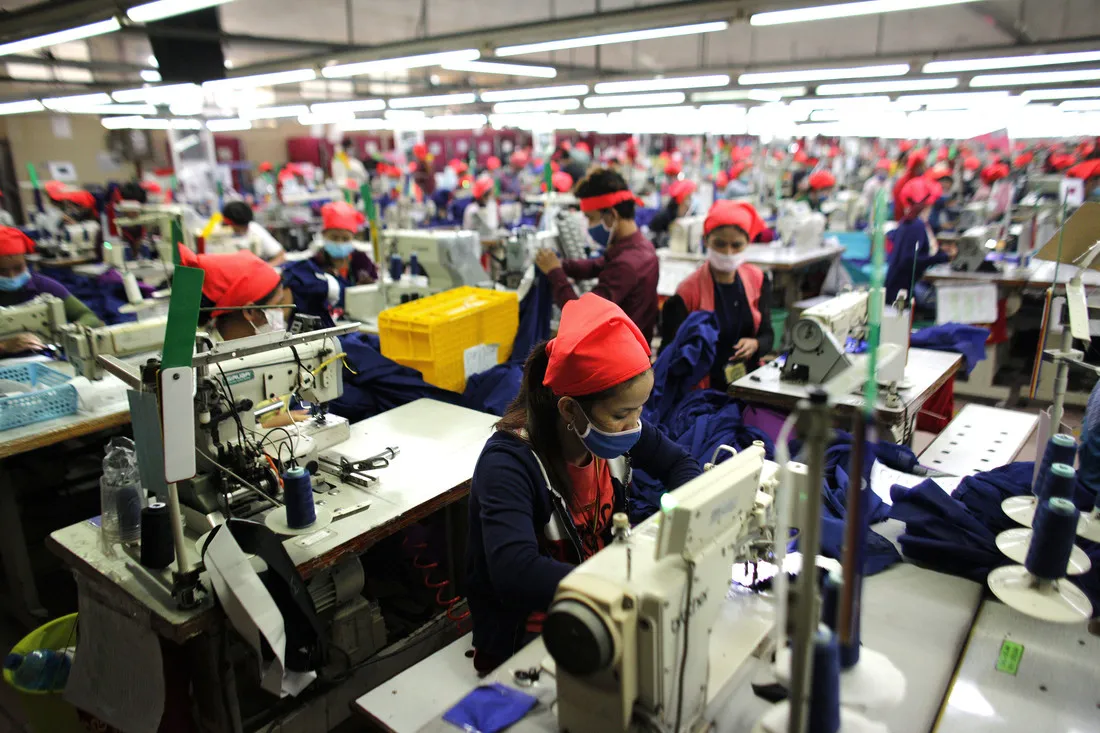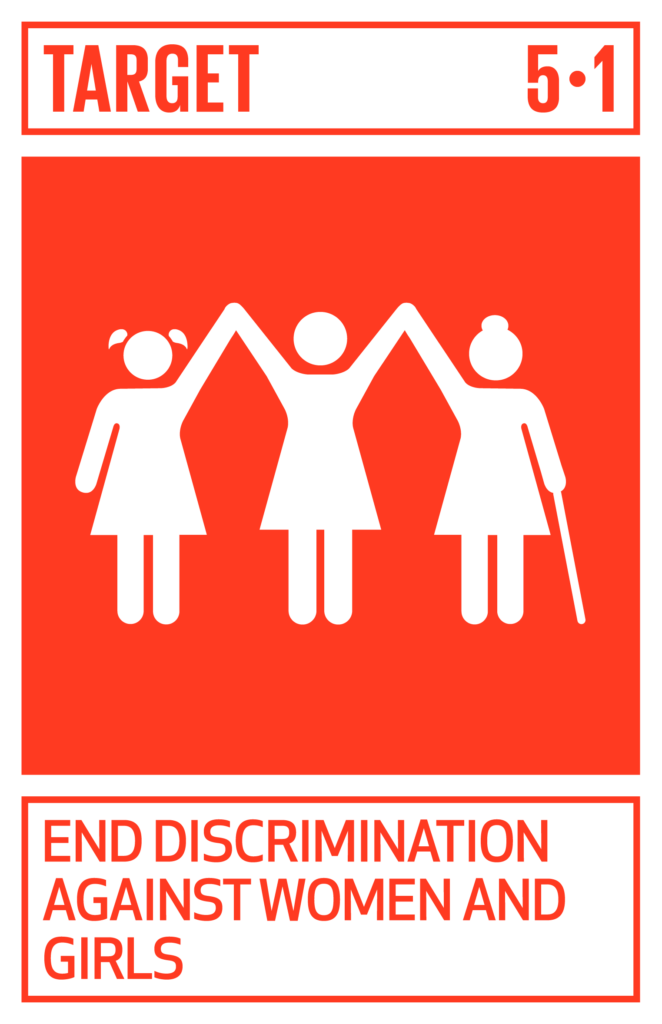 End all forms of discrimination against women and girls everywhere.
End all forms of discrimination against women and girls everywhere.
This target can feel like a big task but each of us and our organizations can make small decisions that end gender discrimination.
What you can do “in the factory” to end discrimination against all women and girls:
- Policy
Follow your company’s gender equity and non-discrimination guidelines in recruiting, hiring, performance reviews, training, and sourcing. - Engage men
Engage men in why gender equality makes your company and your community stronger.- To ensure any efforts to engage men are productive and well-designed, CARE recommends working with expert organizations (typically, non-profits) to identify the proper methodology and build capacities in your company and/or deliver programming.
- For additional detail, visit CARE Insights
- For an example of a successful collaboration to engage men toward gender equality, please visit the MenEngage Alliance
- Training
Ensure that women and men receive an equal number of training hours per year and that the training is of equal quality. - Employee Reviews
Ensure that women receive an equal number of performance and career development reviews as men - Equal Pay
Ensure that women and men are paid the same for the same positions at every employment level.- Ask your company to support regular audits and reviews of pay, including bonuses and overtime pay, and to develop a plan to correct any the gender wage gap.
- The companies that do the best work here are adopting policies that support ILO convention 190 and promote equal pay, protection against violence and sexual harassment. Ask your company to promote transparency about pay, women’s rights, and ways for women to claim their own rights.
- CARE consults with companies worldwide to review their practices and develop dashboards and strategies for achieving gender equality under ILO Convention 190 rules. We do this with a focus on workplace conditions, ethical supply chains, and women’s empowerment.
- Paid parental leave
Establish and support paid parental leave time for men and women. Ensure a workplace culture that supports paid parental leave and does not stigmatize it for any gender. Also, make sure that your company’s parental leave policy is available and supported across the company, in every country, and in each work location where it operates.- Ensure that those taking leave have their position guaranteed upon return and that paid parental leave is available throughout your organization and not just at senior or middle management.
- Flexible work
Where possible allow for flexible working hours so that parents may take care of children or aging parents. - End violence and harassment at work
This is critically important to achieving gender equality. Although women and men experience violence and harassment at work, given gender norms and power dynamics, women are far more exposed to violence and harassment. There is a lot you can do to end workplace harassment.- Please see recommendations for Target 5.2 for more steps you can take to end violence and harassment at work.
- Discipline
Review your disciplinary record for employees and determine whether rules and corrective action are applied equitably and fairly across gender. - Suppliers
Do you have an inclusive supply chain? Establish policies and practices to promote economic inclusion when selecting suppliers. For example, seek out and solicit (1) suppliers owned by women; and (2) suppliers owned or staffed by members of vulnerable, marginalized or underrepresented social groups.- While this is important in any location, it can have an outsized positive impact in rural areas where there is less economic opportunity than in cities. Please see the recommendations in this report for “In the Supply Chain” for more detailed suggestions.
- Externally
Look for local community efforts and organizations to support with company approval. - Advocacy
Support your company’s advocacy for gender equality laws and initiatives including but not limited to:- expanding the definition of discrimination against women
- equal pay for work of equal value
- work prohibitions
- family leave
- inheritance/property
- nationality
- human and labor rights in trade policy
- marriage and divorce
- violence against women
- quotas
- pensions
- legal capacity
Case Studies
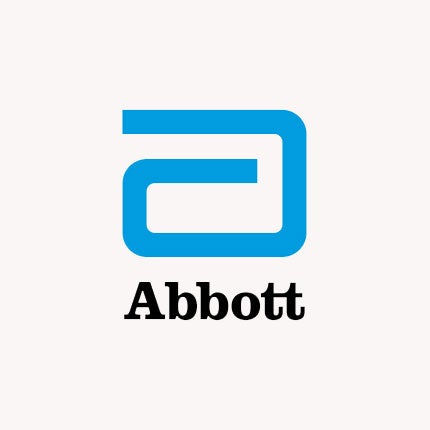 Abbott
Abbott
As a global health technology company that recruits world-class scientists and engineers, Abbott knows women are a critical factor in solving the world’s biggest problems with smart, imaginative thinking. But in the United States, women make up just 24% of the science, technology, engineering and math (STEM) workforce. Black Americans hold 4.8% of STEM jobs but make up 12.3% of the labor force. Hispanics have 6% of STEM jobs yet make up 17.6% of U.S. workers. There are a lot of reasons for this: One is that high school girls and students from underrepresented groups can often think the STEM fields aren’t for people who look like them.
Abbott knows that hands-on experiences give these students the confidence to engage in STEM. That’s why, starting in 2012, it invested in a high school internship program to demystify what it means to work in STEM. The program gives students the opportunity to work on the company’s life-changing technologies alongside engineers and scientists who look like them. Abbott recruits students from diverse partner high schools near areas where the company has facilities. Because of this, 73% of the students participating in the 2020 internship program were from diverse backgrounds. About half of the students move on to Abbott’s college internship program, and more than 70% of the high school internship alumni hired as full-time engineers are women.
Abbott has created a downloadable “Shaping the Future of STEM” blueprint and is sharing the scalable plan with any company interested in starting a high school internship program of their own. Abbott believes changing the statistics will mean a commitment from all of us to provide young people with opportunities in STEM early on.
To learn more, visit www.stem.abbott.
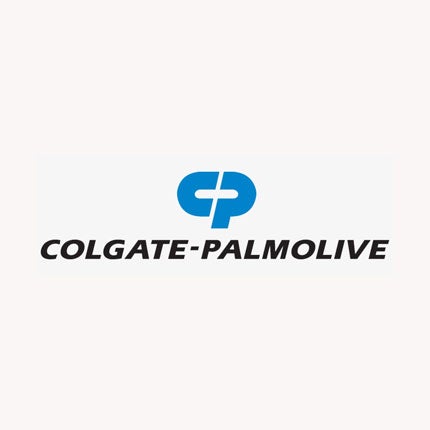 Colgate-Palmolive
Colgate-Palmolive
Colgate Women’s Games is the United States’ largest amateur track series open to all girls from elementary school through college and beyond. Competitors participate in a series of meets to determine finalists who will compete for educational grants-in-aid from Colgate-Palmolive Company. Colgate’s goal is to help girls and women from underserved communities thrive, using the competition as a means to emphasize the value of education—key to Colgate’s purpose to reimagine a healthier future for all people and the planet.
 Google
Google
Women Will is Google’s program for economic opportunity for women. The program is making an impact in 49 countries, supporting women’s economic potential through digital skills and community building. The company’s data-driven insights show that while the gender gap persists, women are unable to truly thrive at home and at work. During the COVID-19 pandemic, through Women Will, Google’s online career development and entrepreneurship workshops reached over 80,000 women across the globe.
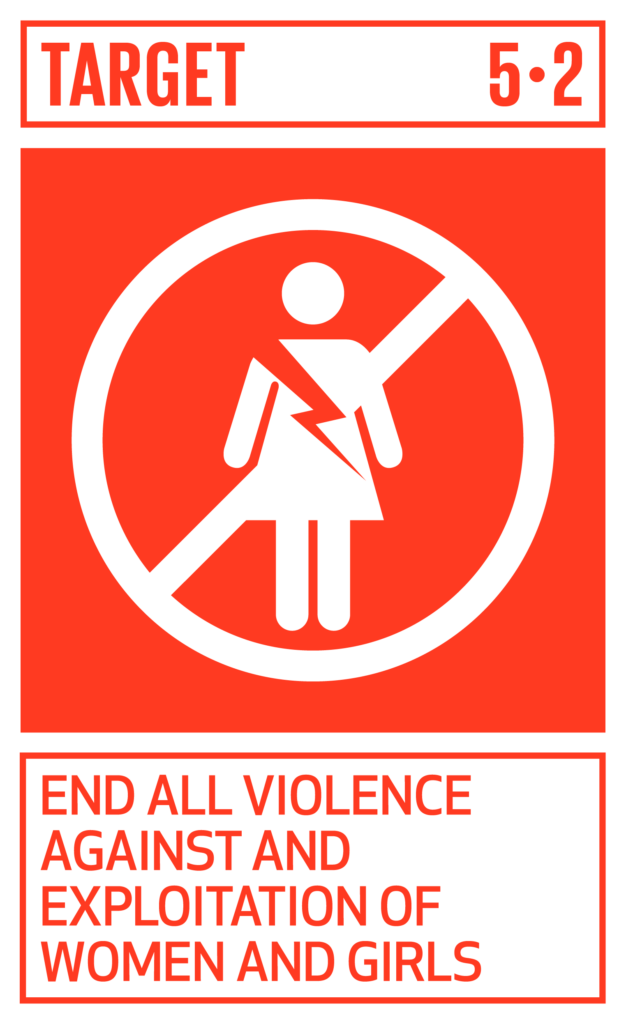 End all violence against and exploitation of women and girls.
End all violence against and exploitation of women and girls.
Keeping everyone safe and free from gender violence is fundamental to a healthy society and workplace. Unfortunately, factories are often environments in which sexual harassment is common. For example, nearly 1 in 3 female garment factory workers reported experiencing sexually harassing behaviors in the workplace over the last 12 months.
You can play a major role in ensuring workplace safety in your factories and in changing social and legal norms to end harassment, violence, and exploitation of women and girls. It’s also good for business and worker retention.
What you can do “in the factory” to end harassment, violence, and exploitation of women and girls:
- Follow policy
Follow your company’s gender equity and non-discrimination guidelines in with respect to sexual harassment and abuse. - Have a clear, firm policy
Establish and support a zero tolerance policy towards gender-based violence and harassment. Ensure there is a confidential complaint process. Be clear. No ambiguity.
- Engage men
Engage men in why gender-based violence is not tolerated and why gender equality benefits us all. Here are steps you can take to engage men. To ensure efforts are productive and well-designed, workshops and programming may be best organized and guided by a third-party, like CARE:- Create structured spaces for men and boys to reflect on masculinities, gender, power and privilege in their lives.
- Allow for conversations with intimate partners, and within families to promote more open communication, equitable relationships, nonviolence, support and trust.
- Bring men together to talk and share testimonies. This will strengthen relationships among male allies to build and expand social support and solidarity against gender-based violence.
- Support men to facilitate discussions and campaign around gender and masculinities to transform social norms; (See, for example, AB InBev’s #NoExcuse initiative in South Africa to change gender norms).
- For additional guidance, visit CARE Insights
- For an example of a successful collaboration to engage men toward gender equality, please visit the MenEngage Alliance
- Engage women
Use your convening power and resources to ensure women understand their rights and protections by organizing training and information sessions and using creative ways to promote learning this information. Here’s an example of work CARE did with women construction workers in Cambodia. - Create workplace champions
Identify individual champions or key figures to promote cultures of change and more equitable working conditions. Researchers in Australia recommend champions be in leadership and middle management to enlist greater support and buy-in for a given approach. Organizations should ensure the role doesn’t fall to one of the few women in positions of leadership. - Shift workplace norms and build a strong culture that ensures safety and equity
- Give surveys to workers regarding sexual harassment allowing employees to share what they have witnessed and/or heard about and what actions to take in response to any incidents.
- Communicate to workers about the company’s gender equality objectives and hold events around key days (e.g. International Women’s Day, International Day of the Girl).
- Ensure that workplace training and communications highlight the role that norms play in perpetuating sexual harassment and promote positive norms instead.
- Encourage bystanders to sexual harassment to intervene.
- Review company practices, like incentive structures, to ensure that they are not creating an environment where harassment occurs.
- Hold suppliers to same standard
Require employers along your company’s value chain to have a policy of zero tolerance towards gender-based violence and harassment. - Give appropriate training
- Conduct training regularly, contextualized to the organization. However, reaching everyone does not mean everyone gets the same intervention. Vary training for different communities and groups to ensure relevance across diverse populations. For example, men-only programs may promote honest and reflective discussion among men that challenge socially constructed views of masculinity.
- Develop materials and messages in consultation with local violence-against-women service providers. Training should be provided by trainers who are content experts, authentic, and empathetic. For example, the gender of a trainer may be important to create an environment where people can participate freely. In design, training should be intensive and provide opportunities for continued engagement, such that participants can address underlying attitudes and build new norms and behaviors. Training that is interactive and participatory can support new norms and shared meanings while changing attitudes, values, skills, and new ways of relating.
- When working with employees, maintain the following principles
- Confidentiality – the identity and identifying information are to be kept confidential and private unless otherwise voluntarily agreed.
- Ensure consent – obtain the individual’s voluntary informed before any action is taken.
- Do no harm – take appropriate measures to secure immediate safety and refrain from actions that may result in future harm, including in training and communications.
- Adopt a victim and survivor-centered approach – recognize that the rights, needs, and wishes of victims, survivors or complainants are to be placed at the center of the action and for these individuals or groups to be treated with dignity and respect.
- Ensure equal treatment – refrain from discriminating based on gender, sexual orientation, age, ethnicity, ability, migrant status, contractual status, marital status, education status, or otherwise.
- Advance policy and future interventions – draw from the findings and lessons from cases of sexual harassment to raise awareness and to inform future preventive and response measures.
For additional reference:
CARE developed a workplace sexual harassment prevention package for garment factories that includes a workplace sexual harassment policy, an implementation guide for factories and comprehensive multimedia training modules for factories to deliver to staff to help them prevent and report sexual harassment.
CARE Australia delivered this summary report on what works to stop sexual harassment in the workplace. Read more
CARE partnered with Business Fights Poverty to help develop this toolkit for how business can address gender-based violence. Read more
Case Studies
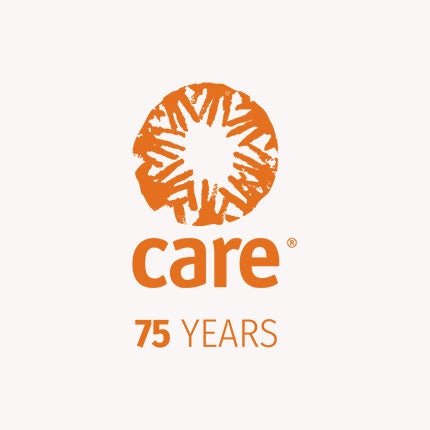 CARE
CARE
In Myanmar, CARE and NGO partners have collaborated to promote action by the labor movement to prevent violence and harassment in the workplace. Unions in Myanmar are increasingly recognizing the importance of the issue, reflected in increased requests for training and technical support. The Confederation of Trade Unions in Myanmar (CTUM) has worked with CARE to strengthen their activists’ capacity to understand and recognize sexual harassment. They are now taking action to protect the rights of CTUM’s 65,000 members through campaigning, raising complaints, and demanding action by factories.
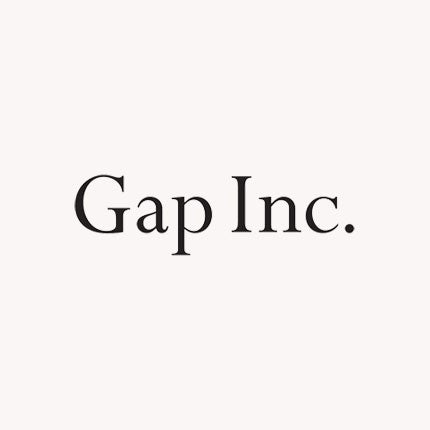 Gap, Inc.
Gap, Inc.
Women, who comprise the majority of the global garment workforce, disproportionately face challenges in the workplace, especially regarding harassment. Over the years, Gap Inc. has conducted regular assessments of the facilities with which it works and has found serious violations related to gender-based discrimination and harassment. These issues require all relevant stakeholders in the garment sector to invest more time and resources to address.
To do its part, in 2018, Gap Inc.’s Supplier Sustainability team worked with its suppliers in India to improve how they scope and implement policies on Gender Based Violence Prevention & Response (GBVP&R). Gap Inc.’s aim was to help its suppliers raise awareness about Gender Based Violence and the rights and responsibilities of male and female employees, including supervisors and managers. To review progress, Gap Inc. assessments include components on GBVP&R and determining areas for improvement, if needed, within a remediation plan. Gap Inc. has continued to evolve its efforts based on its learnings. Specifically, the company expanded these trainings to address gender-based discrimination and harassment in Bangladesh, Cambodia, China, El Salvador, Guatemala, Haiti, Honduras, Indonesia, Jordan, Nicaragua and Vietnam. By the end of 2019, Gap Inc. had conducted trainings for more than 500 facilities in its global supply chain—about 70% of all facilities it works with.
Looking ahead, Gap Inc. will build on this program to focus on women’s empowerment, which it will link to Empower@Work, a collaborative effort with BSR HERproject, ILO Better Work, and CARE. It aims to use common curriculum, best practices and collective action to advance women’s empowerment and gender equity in global supply chains.
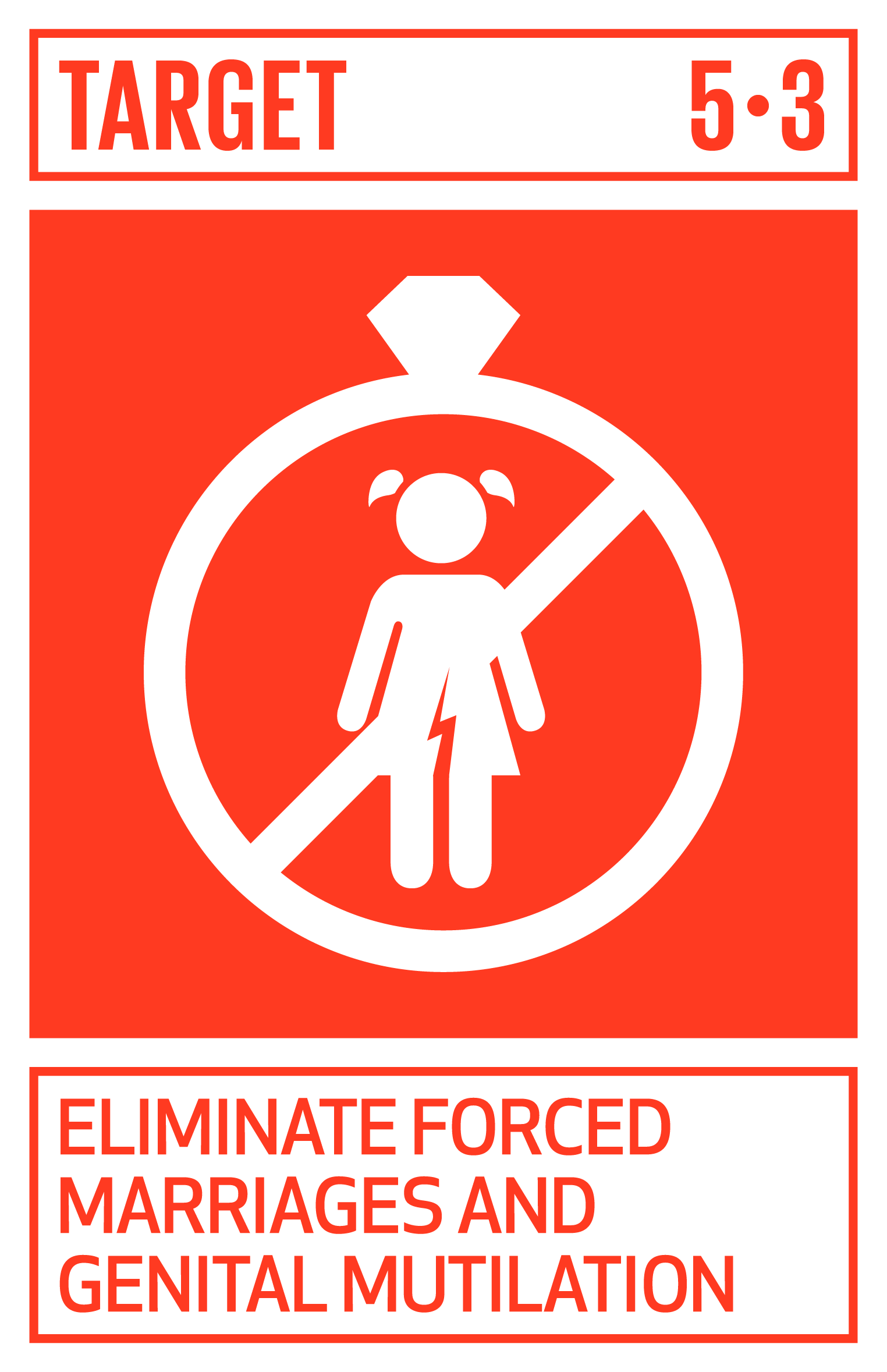 Eliminate all harmful practices, such as child, early and forced marriage and female genital mutilation.
Eliminate all harmful practices, such as child, early and forced marriage and female genital mutilation.
While your day-to-day work may not lend itself to addressing the issue of forced marriages and genital mutilation, companies can and should play a role in changing harmful practices that disadvantage and hurt women and girls.
What you can do “in the factory” to eliminate harmful practices:
- Follow your company’s gender equity and non-discrimination guidelines concerning sexual harassment and abuse.
- Work with your company’s advocacy team to develop strategies for changes to national and local laws to eliminate harmful practices.
- Host workshops for employees and suppliers on why certain practices are harmful. To ensure any efforts are productive and well-designed, CARE recommends working with expert organizations (typically, non-profits) to identify the proper methodology and build capacities in your company and/or deliver programming.
Case Study
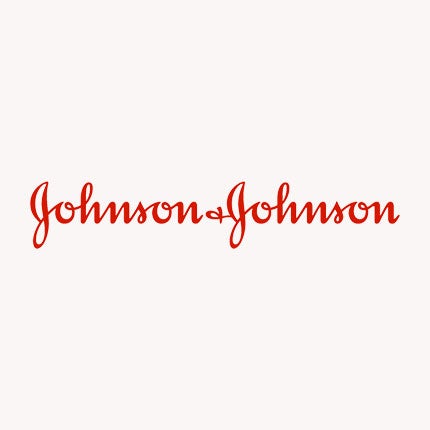 Johnson & Johnson
Johnson & Johnson
In Ethiopia’s Amhara, where rates of child, early and forced marriage are high, Johnson & Johnson implemented Towards Improved Economic and Sexual Reproductive Health Outcomes for Adolescent Girls in Ethiopia (TESFA) to address the economic rights and sexual and reproductive health of ever-married girls. Between 2015-2018, CARE worked with married adolescent girls and developed tested approaches to support positive changes in their lives. TESFA scaled up geographically, reaching 2,124 ever-married girls in 12 kebeles across the woredas of Farta and Gunabegemider. This project has been critical in replicating and geographically scaling a proven program model to improving girls’ sexual reproductive health and economic empowerment, and has advanced innovations in measuring social norms.
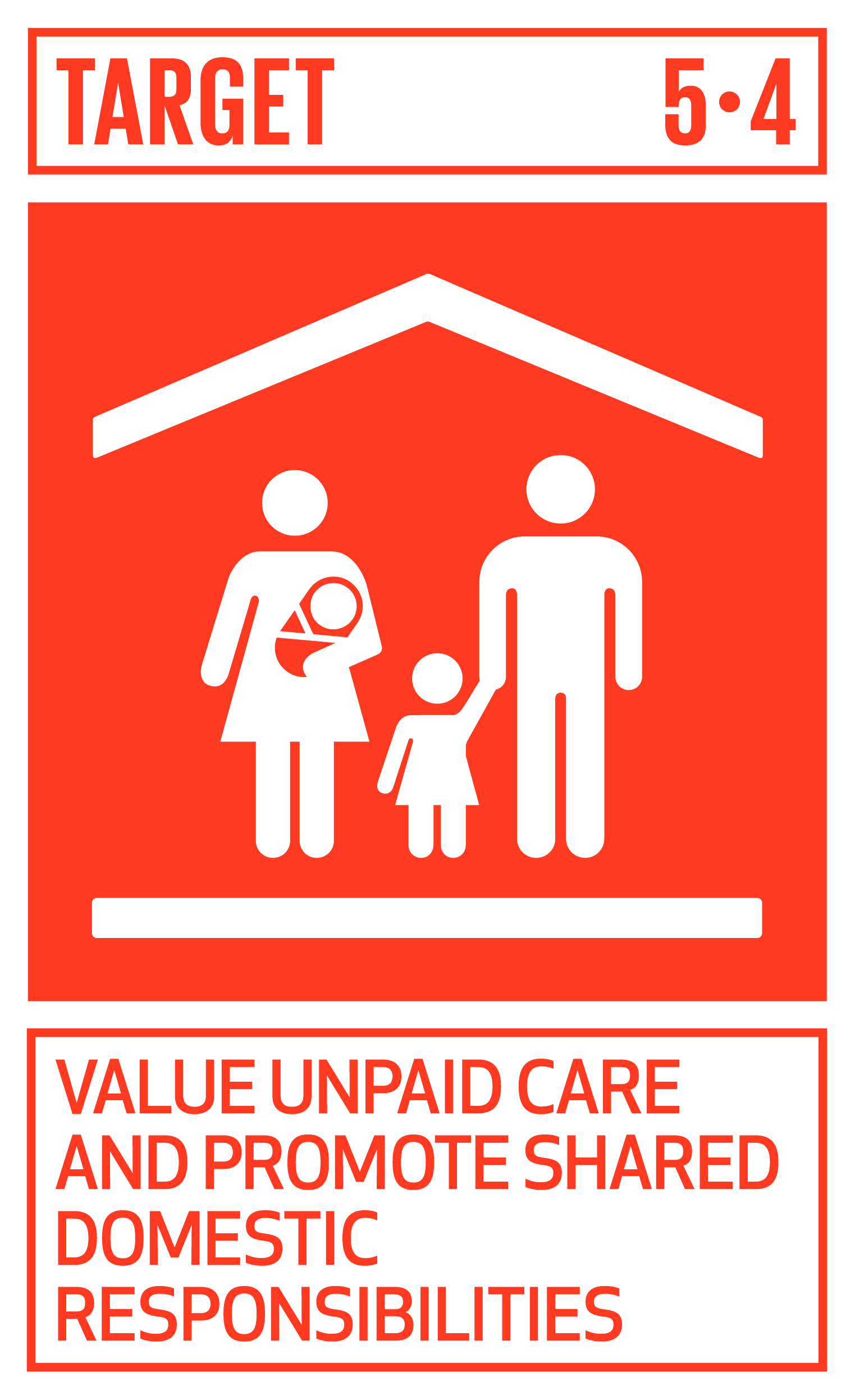 Value unpaid care and promote shared domestic responsibilities.
Value unpaid care and promote shared domestic responsibilities.
Unpaid care is a significant barrier to women’s economic activity because they do most unpaid caretaking and domestic labor. Globally, women spend over three times more time doing unpaid work and care than men. When women also carry a paying job, they bear a double burden.
Companies can and should play a significant role in valuing unpaid care, providing flexibility and space for employees, and changing social norms about caretaking. Doing so increases employee productivity, recruitment, and retention, creates stronger supply chains, and increases customer loyalty.
For systemic change, government, business, and civil society need to do their part to complete the “5 Rs”:
- Recognition of care work as productive, which adds value to the economy and society;
- Reduction of total hours spent on unpaid services;
- Redistribution at the household level, while shifting responsibility to governments and employers; and
- Representation of the most marginalized caregivers in decisions on and design of care policies, services and systems.
- Reward through decent working conditions and equal pay for work of equal value, so as to protect a workforce largely made up of women.
Companies can value and support caretaking through Nos 1, 2, and 5: Recognition, Reduction, and Reward.
What you can do “in the factory” to value unpaid care and promote share domestic responsibilities:
- Provide childcare
Create day care and other childcare spaces near the fields and in company facilities.- If your company cannot provide childcare directly, subsidize childcare offsite.
- The same applies to healthcare. Consider partnering with local healthcare providers to offer a healthcare clinic during an off-day in the communities where the majority of workers live.
- Provide easy access to breaks for breastfeeding mothers
Providing easy access to breaks for breastfeeding in a private space enables these women to step away without worrying about retribution for stepping away to take care of their health and their child’s health.
- Allow family-friendly flexible work
Implement and encourage flexible working arrangements. This might include allowing for different work hours and work days, allowing for remote meeting participation where possible, and onsite nursing facilities. - Give specific days off for doctor’s visits
Allowing specific days per month for workers to attend doctor’s appointments can improve workers’ wellbeing and productivity. This time allotment can be structured to avoid any challenges to production goals. - Set up a “Relief Team”
Consider putting in place a team that can replace workers who are absent for healthcare needs. - Extend Flexibility to Part-Time Workers
Extend flexible working benefits to allow for caretaking to part-time and temporary workers. - Ask women to shape policies
Ensure women’s leadership in and equal contributions to designing, implementing, and evaluating policies related to child care, work schedules, etc. - Engage men
Institute workshops and programs that promote equal responsibilities and engage men and boys. Many men are unaware that everyone benefits when they share domestic and care responsibilities.- To ensure any efforts to engage men are productive and well-designed, CARE recommends working with expert organizations (typically, non-profits) to identify the proper methodology and build capacities in your company and/or deliver programming.
- For additional guidance, visit CARE Insights
- For an example of a successful collaboration to engage men toward gender equality, please visit the MenEngage Alliance
- Change social norms
Promote the equitable responsibility for care between women and men through advertising campaigns and flexible work schedules.
Additional resources include the following:
- Oxfam/Unilever’s Business Briefing on Unpaid Care and Domestic Work: Why unpaid care by women and girls matters to business, and how companies can address it Read more
- Work and Opportunities for Women Read more
Case Study
 Gap Inc.
Gap Inc.
In 1969, when Doris and Don Fisher opened the first-ever Gap store, they began to shape a culture of equality by contributing the same amount and running the business as equal partners. This was during an era where less than 40 percent of women worked outside the home. Fast forward to today, women account for nearly 76 percent of Gap Inc.’s worldwide employee base and a majority of company management. Equal Pay Day highlights the lingering discrepancy in pay between men and women, as well as the progress being made toward closing the gender pay gap. The good news is that every day is Equal Pay Day at Gap Inc., where women and men are paid equally for equal work. In 2014, Gap Inc. made history by becoming the first Fortune 500 company to publicly confirm it pays men and women equally for equal work. Third-party analysis showed no significant gender wage difference between the women and men at Gap Inc., thus confirming “equal pay for equal work.” Dollar for dollar, pound for pound, yen for yen. There is no gender pay gap across our global organization. Since 2014, Gap Inc. has conducted annual reviews of its pay data by gender. While it has strong data to back its commitment to gender pay parity, it is aware that more work needs to be done. In 2020, the company began using an external firm to assess its pay data by race for all U.S. employees.
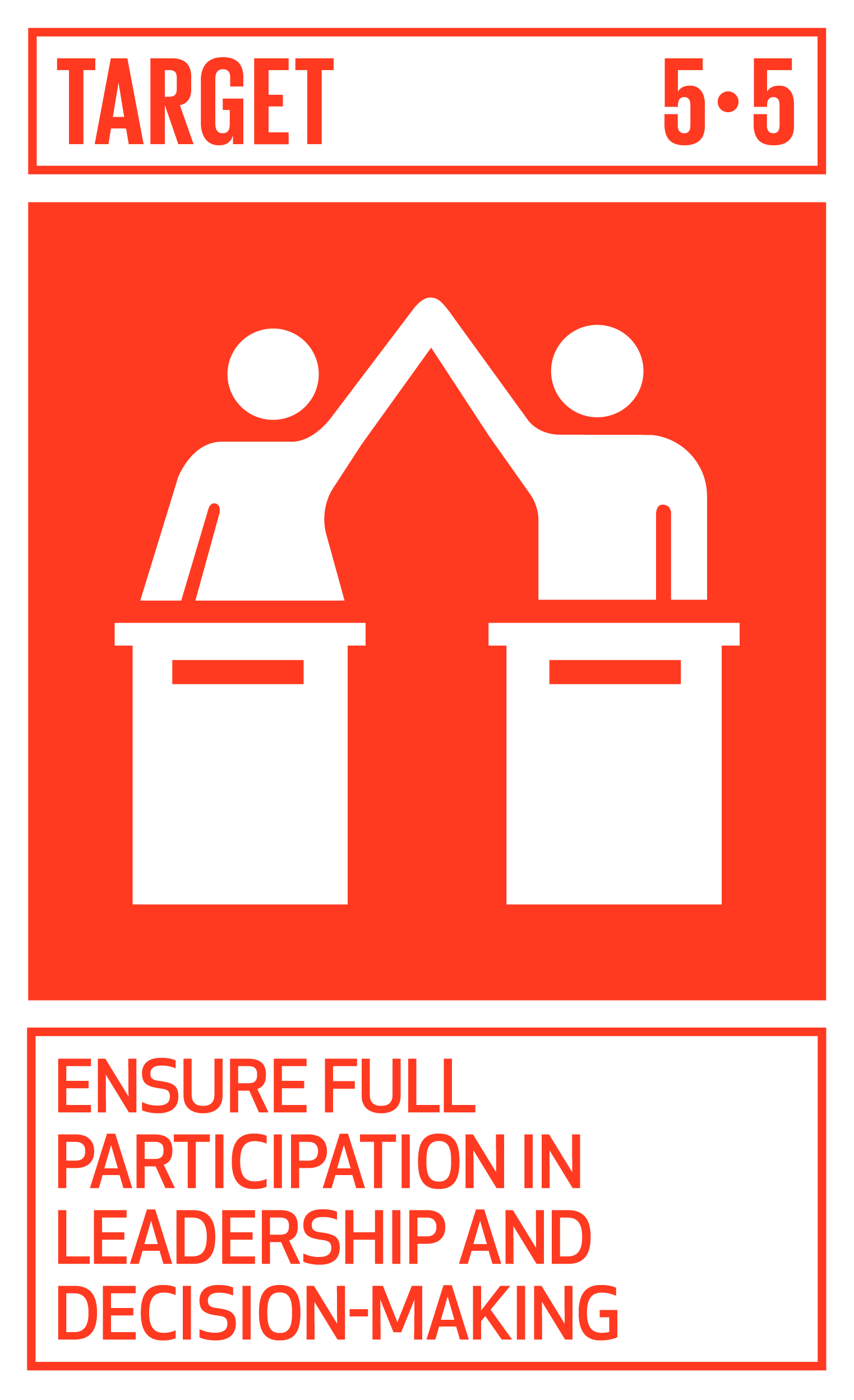 Ensure full participation in leadership and decision-making.
Ensure full participation in leadership and decision-making.
When women lead, outcomes are often better than when women are not in decision-making roles. One of the key indicators for this target is the percentage of companies in any given country with a female as the top manager, and the share of middle or senior management positions filled by a female. Here, companies play a central role in achieving gender equality.
What you can do “in the field” to ensure full participation in leadership and decision-making:
- Hire equal
Ensure your hiring practices are gender-equal. - Train and promote women
Look for every opportunity to train and promote women to leadership positions.
- Hire women at every level
Work to increase representation of women in management positions, skilled (non-management) positions, and unskilled jobs. - Give voice and connect women to leaders
Empower women to speak up about unequal treatment without fear of or actual retribution. Promote worker-based committees and spaces for women leaders to connect with and influence factory leaders and other decision-makers - Partner with gender-equal entities
If your company has business relationships with farmers’ cooperatives or associations, consider working only with those that have a significant proportion of women representatives in leadership positions and women members in farmers’ cooperatives and/or associations. - Engage in the community
Look for ways to influence positive gender outcomes in the communities where your company works. Consider partnering with local non-profits and engaging family members of your employees. Efforts to build women’s skills, capabilities, and access to resources, so they are better enabled to make decisions, both productive decisions and household decisions, and fully participate in economic activity, are vital to increasing the number of women in leadership roles.
Case Study
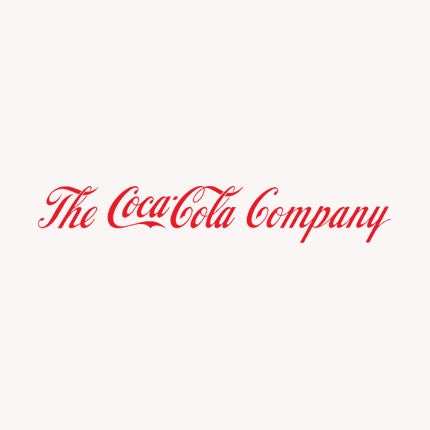 The Coca-Cola Company
The Coca-Cola Company
The Coca-Cola Company (TCCC) strives for a gender-balanced workplace. The Company believes that investing in and empowering women not only directly benefits them, but also its business and its communities. According to publicly available statistics, companies in the top quartile for gender diversity on executive teams are 21% more likely to outperform on profitability. TCCC has an aspiration to be 50% driven by women and focuses on growing and developing female leadership and its female workforce overall. To make progress, the Company has leaned into a number of initiatives:
In 2007, TCCC started a Global Women’s Leadership Council (GWLC), comprised ofwomen and men executives, that focused on accelerating the development and promotion of women into roles of increasing responsibility and influence. The GWLC did this through actions across 3 pillars:
- Sponsorship: A sponsorship program for female leaders matched to Executive Leadership Team members including the CEO.
- Pipeline: Launching the Women in Leadership program, a global System program designed to accelerate the leadership capabilities of women in the pipeline at mid-level positions. More than 850 female employees to date have participated in the program.
- Bias Awareness: In order to help foster an inclusive culture and to engage men as allies in the pursuit of our diversity and inclusion aspirations, The Coca-Cola Company expanded the GWLC to include women and men.
The Company also established a Women’s LINC Business Resource Group (BRG), designed to engage employees in support of our gender diversity and inclusion priorities, with a mission to empower women to lead, inspire and connect. The BRG now has approximately 1,500 members in the U.S., and there also several other chapters around the world.
TCCC’s efforts have included gender-neutral paid parental leave and committing to paying all associates fairly and equitably. The company has been conducting pay equity analyses (with regard to gender and race/ethnicity) in the U.S. for the Corporate function for several years. In 2019, it extended the pay equity analysis for gender globally across all business units (now operating units) of the company, as well as employees of Coca-Cola North America. Between 2017 and September 2020 women in senior leadership roles globally in the Company increased 2.4% from 31.4% to 33.8%. In 2020, four new North America Operations Zone Presidents were appointed – all were qualified women.
Coca-Cola Women in STEM (CWIS) is an internal organization dedicated to contributing to the talent pipeline at The Coca-Cola Company by raising awareness of STEM (Science, Technology, Engineering and Math) opportunities in the community, and by empowering, educating and inspiring the women of Coca-Cola to excel in leadership under the STEM umbrella. CWIS has about 5000 members and reaches thousands of middle/high school and college students each year though STEM events and scholarships.
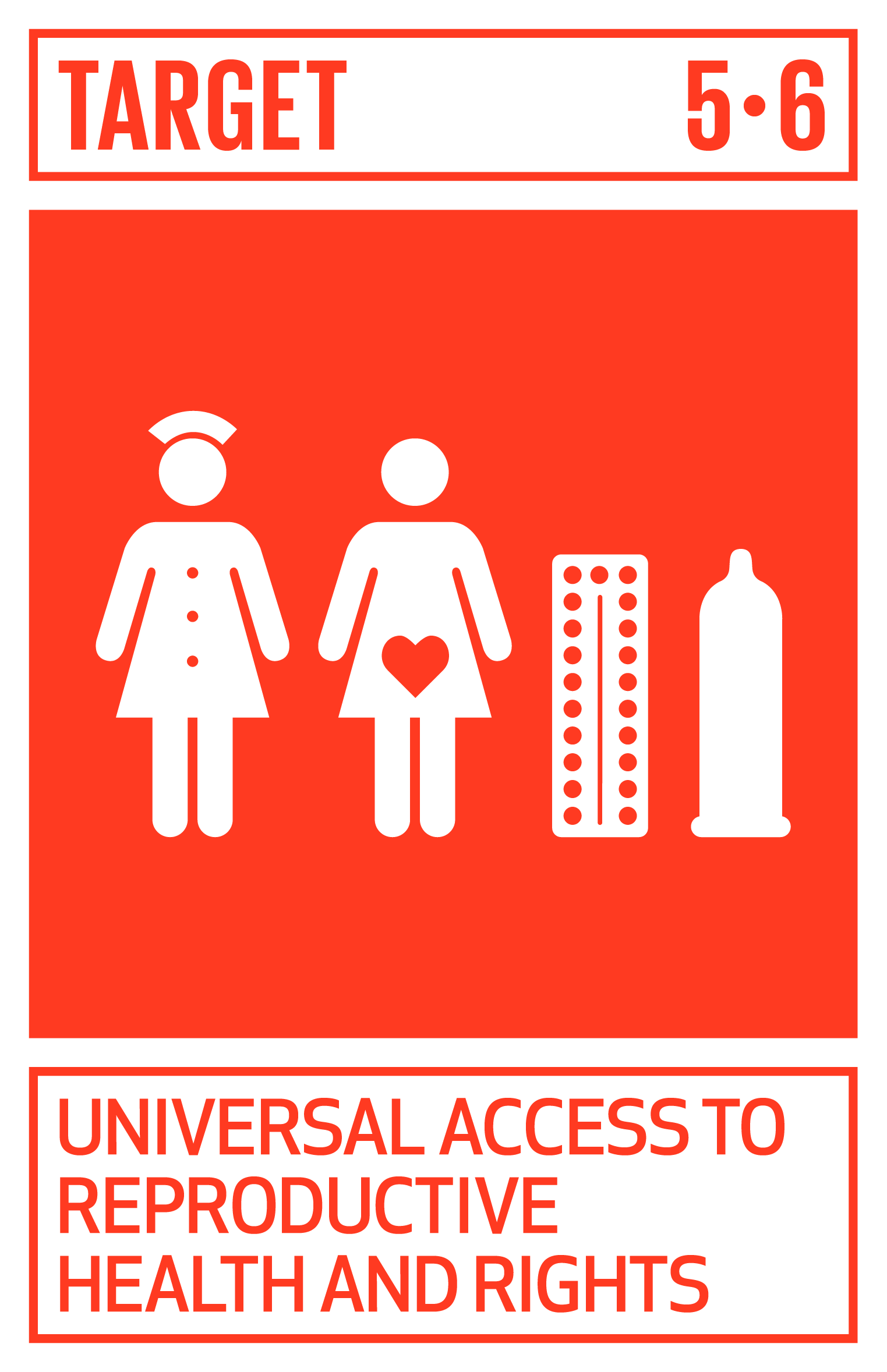 Universal access to reproductive rights and health.
Universal access to reproductive rights and health.
When women control their own health care decisions, including reproductive health decisions, and have access to health care, their ability to thrive, at work and at home, increases. Companies play an important role in providing the benefit of access to care in many countries and in promoting the norms that allow for accessible reproductive care.
What you can do “in the factory” to provide universal access to reproductive rights and health:
- Provide benefits
Provide benefits that cover reproductive health services. This will vary from country to country. - Set the tone
Encourage women take the time to go to the doctor and take time to care for their health. - Make a public commitment
Publicly celebrate and encourage health through workplace programs and expertise to reach women with needed information and services. - Provide information
Access to basic health information can be difficult to find, especially for women. You can help connect your workers to information on family planning, menstrual hygiene, nutrition, and pre-natal care. - Support agency of workers
Ground health care policies in volunteerism and informed consent. Support a woman’s ability to choose when one becomes a parent. - Advocate
Where legal change is necessary, work with your company’s advocacy team to ensure the law empowers women to make their own informed decisions about their reproductive and physical health, including, for example: determining whether to have sexual intercourse with their husband or partner; deciding on use of contraception; and deciding on their own healthcare.
Case Study
 Abbott
Abbott
NCDs in Humanitarian Crises
According to the United Nations, more than 80 million people today are displaced from their homes by conflict, natural disasters and other emergencies.
In response, governments, organizations and companies have focused on meeting urgent needs for food, water and shelter. But for many people, particularly in the aftermath of crisis, basic needs include uninterrupted care and management of chronic diseases – also known as noncommunicable diseases, or NCDs, such as diabetes and cardiovascular disease. Despite this, chronic diseases often don’t receive enough attention in these humanitarian settings, according to the World Health Organization.
Working together with CARE, the global healthcare company Abbott and its foundation the Abbott Fund launched one of the world’s first programs aimed at filling this gap – creating a new model, both scalable and replicable, for the effective prevention and care of NCDs in challenging settings around the world.
The three-year program in Marawi City, Philippines is focused on supporting internally displaced people affected by diabetes, hypertension and obesity. Program work includes screening to identify people with NCDs and those at risk of developing NCDs, and expanding access to needed clinical care.
A key focus for the program is mobilizing displaced communities to fill gaps in prevention and care, with an emphasis on empowering women. With an in-depth understanding of the needs of their neighbors, women volunteers lead “NCD Clubs” to advance disease prevention and management, and provide vital peer support. The program also strengthens the ability of local healthcare systems to manage NCDs, and raises awareness and educates on the prevention and control of NCDs.
Initial results are promising. Baseline screening found that more than half (59%) of people identified as diabetic were previously undiagnosed. And following targeted interventions, 46% of diabetic and pre-diabetic patients saw a decrease in average blood glucose (HbA1c) levels, which is an indicator of better glucose control and lower risk of complications.
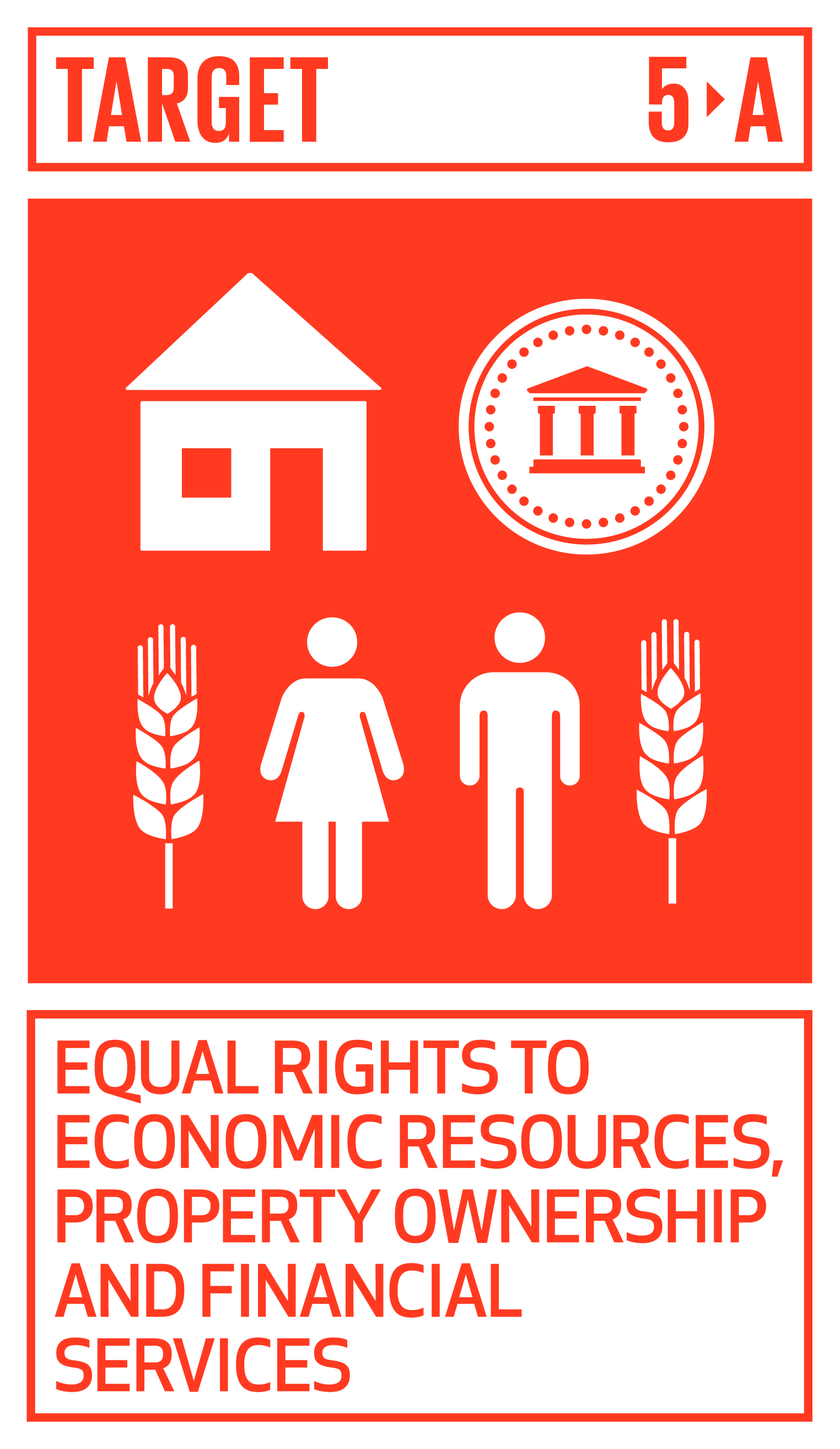 Equal rights to economic resources, property ownership and financial services.
Equal rights to economic resources, property ownership and financial services.
Agricultural land ownership is one of the most important mechanism for women to build wealth and economic stability. Companies can play a role in increasing the proportion of women who own or secure rights over agricultural land.
What you can do “in the factory” to provide equal rights to economic resources, property ownership and financial services
- Connect women to resources
Support connecting women to financial services through savings groups, mobile money, and financial services that take women’s needs into account. CARE has set up Village Savings and Loans Associations across the world to help women build with financial resources to launch and support their businesses. - Advocate
Work with your company’s advocacy team to push for legislative and legal changes to allow for female-land ownership when it is prohibited and to ensure equitable access to capital and resources for female agricultural business owners.
Case Studies
 Mastercard
Mastercard
HERfinance – The Mastercard Center for Inclusive Growth has worked with BSR to scale up wage digitization for ready-made garment factories and workers in Bangladesh, Egypt, and Cambodia. The program focuses on implementing workplace training, especially tailored to women, and has included the development of specialized technology training tools to help factory managers and workers effectively transition to—and use—digital financial services. Shifting behavior away from cash is an extremely challenging task, regardless of gender. However, due to their unique circumstances, women remain at an increased risk of missing out on the benefits of digital financial services. For example, they are less likely than men to appear in the tax rolls, have formal identification, or own a cell phone. Moreover, they are less likely to control household finances. The existing digital gender gap, coupled with these barriers, means women may not have the access, knowledge, or confidence to use or fully benefit from digital solutions without additional support. Well-designed programs which support the transition from cash to digital financial services and take gender biases into account can increase women’s control over their finances, enhance their prospects for economic recovery and empowerment, and improve resilience in the long run. Since empowering women is critical for gender equality and brings clear socio-economic and business gains, their needs and circumstances should be strongly considered in policy and programmatic responses. This includes prioritizing efforts to support women’s financial resilience as they recover from COVID-19 and the associated economic challenges.
 The Coca-Cola Company
The Coca-Cola Company
5by20. According to a baseline study conducted by the Company in 2011, an estimated 86 percent of small retail shops globally are owned or operated by women. In 2010, The Coca-Cola Company (TCCC) made a commitment to enable the economic empowerment of 5 million women entrepreneurs across its global value chain by 2020. The decade -long 5by20 program equips women entrepreneurs to overcome social and economic barriers by providing business skills training, access to financial services and assets, and connections with peers and mentorship networks. The women participating in 5by20 work in roles across Coca-Cola’s value chain, including retailers, suppliers, producers, artisans and more. The program also covers women who have been empowered beyond the Company’s value chain, through The Coca-Cola Foundation-funded initiatives.
One example of a 5by20 program is the “Success IS ME” program in Poland. This is a nationwide project helping women to build their self-esteem and strengthen their business and life competencies. This includes building the knowledge and skills of women to start and operate profitable businesses, and to successfully search for and secure a job or to change jobs. The project operates an online knowledge sharing platform, holds regional conferences and local workshops, and has established ambassador networks in 30 cities in Poland who organize monthly workshops and provide online support through closed Facebook groups. Another example is the Philippines Sari Sari 5by20 program, that targets micro-small and medium sized women-led enterprises. In 2020, the Covid-19 pandemic induced health and economic crisis, disproportionately impacting women and their businesses. Together with partners in the Public and Private sector Coca-Cola Philippines set out to support over 20,000 micro-retailers by launching the Rebuilding Sari-Sari Stores Through Access to Resources and Trade program or the ReSTART program earlier in the year. This timely program specifically addressed the barriers faced by micro-retailers during the pandemic such as Lack of access to much-needed capital, guidance on how to safely re-open and operate their business, plus the needed skills and know-how to properly navigate through the uncertainty as they steadily got back on their feet.
As of the end of 2020, TCCC, working alongside its partners has achieved its goal of having enabled the economic empowerment of over 6 million women in diverse programs across 100 countries.
Several lessons have been learnt from the 5by20 initiative:
- Engagement of Company leaders and partners was key throughout the process, from program inception to completion. 5by20’s shared ownership model provided the foundation for long term sustainability of the project, including aligned values, strategic leadership, the development of tactics, and the commitment of time and resources.
- Working with the right implementing partners to help scale programs and achieve our goal was key from the onset of the program
- Technology was an emergent tool of 5by20 efforts, particularly around the use of online, digital platforms for training delivery and locations suitable for women with heavy family obligations. Technology offers a means for rapid program scaling, as well as enhancing the monitoring and evaluation of programs.
- As this was a numerical goal, we instituted a transparent and rigorous counting methodology and Governance framework for reporting – This meant a strong governance process that enabled independent third parties to validate and provide review-level attestation over the 5 million women enabled by our Program, were key to ensuring program integrity.
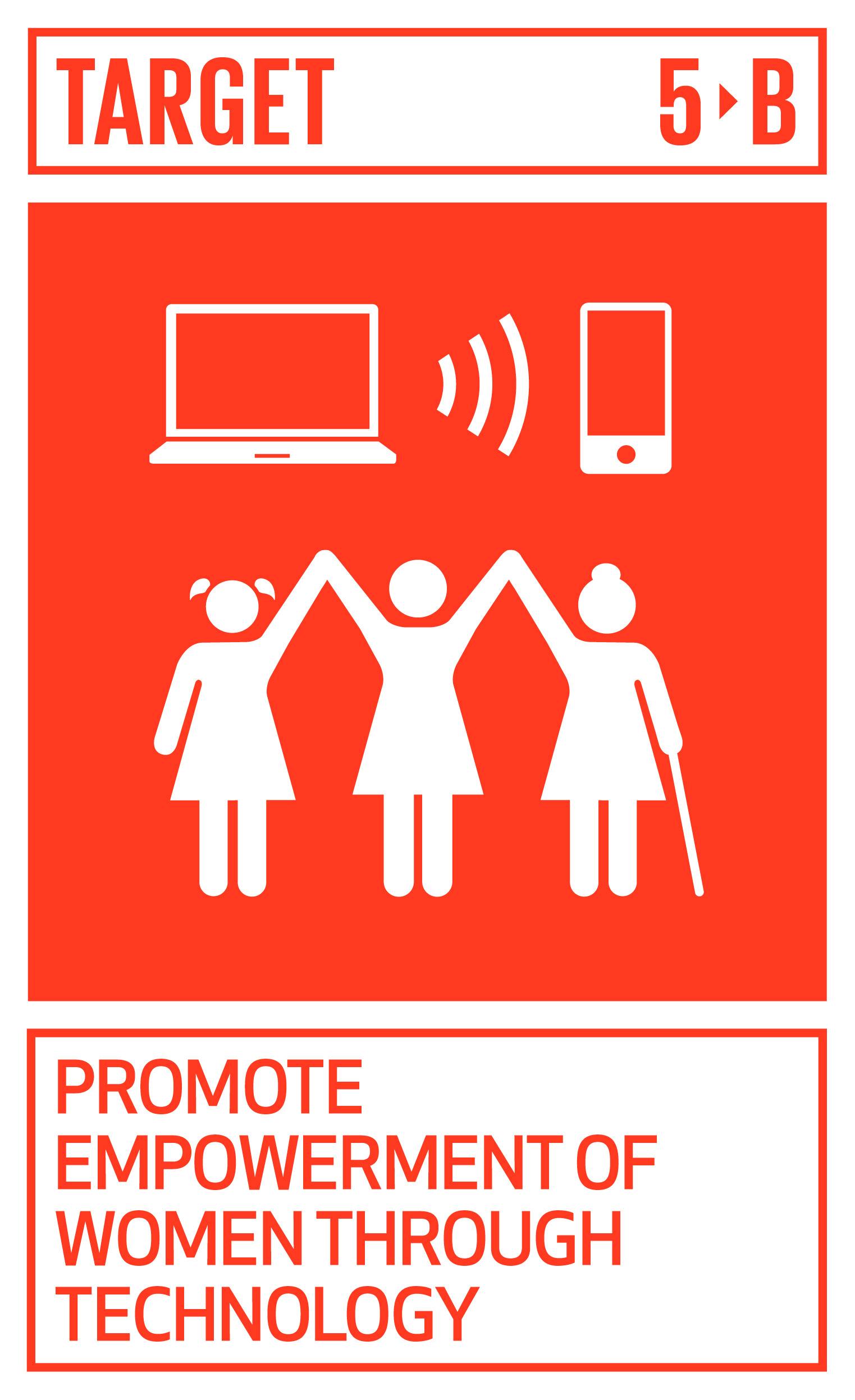 Promote empowerment of women through technology.
Promote empowerment of women through technology.
Technology can lower barriers for financial access, communication, and female empowerment. Companies have the opportunity to leverage technology to use technology to achieve gender equality in significant ways.
What you can do “in the factory” to promote empowerment of women through technology:
- Provide access
For workers of all types, your company can provide access to information and technology and use technology to increase women’s participation in programs. - Provide privacy
Allow workers to submit surveys, complaints, and concerns through technology so that they can speak freely. - Provide digital wages
This can save time for women and ensure they can directly access and control their wages by helping them to send, save and make payments securely through their mobile phone.
Case Studies
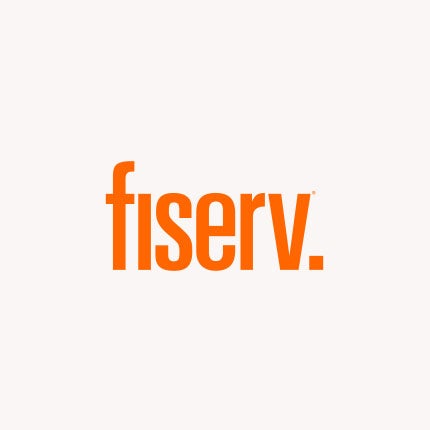 Fiserv
Fiserv
Fiserv has committed to bringing more women and girls into technology careers. The company (1) partners with Women In Technology (WIT) to inspire, hire and empower women in technical fields; (2) provides scholarships to women in technology to ensure inclusive pathways into STEAM; (3) partners with Girls Who Code and the Girl Scouts to provide access to technology at an early age; and (4) works closely with BBBS to provide STEM kits to girls in unrepresented communities.
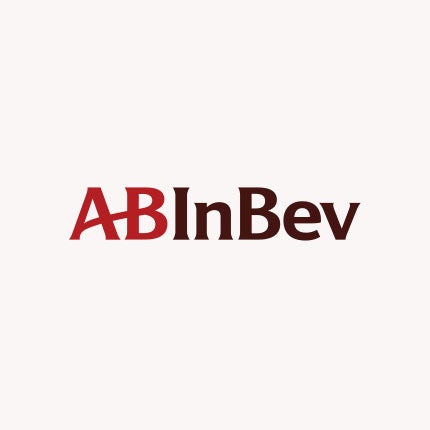 AB InBev
AB InBev
Pony Malta, an AB InBev brand, is one of the most popular beverage brands for teenagers in Colombia. Given the drink’s popularity, AB InBev used its influence to encourage girls to seek inspiration from pioneering women. The initiative, called #SheSpeaks, urges teenagers to share quotes and messages from female pioneers across social media. The initiative launched on TikTok for International Day of the Girl and used one of the platforms most popular features, dubbing. With quotes from over 100 women including Michelle Obama, Christina Koch, Malala Yousafzai, Lady Gaga and the late Ruth Bader Ginsburg, girls could record themselves lip syncing their words to inspire and empower others. Citing the fact that over 54% of TikTok users are women, AB InBev ‘s #SheSpeaks effort sought to inspire and empower young girls to be anything they want to be and encouraged them to follow women who dared to dream big.
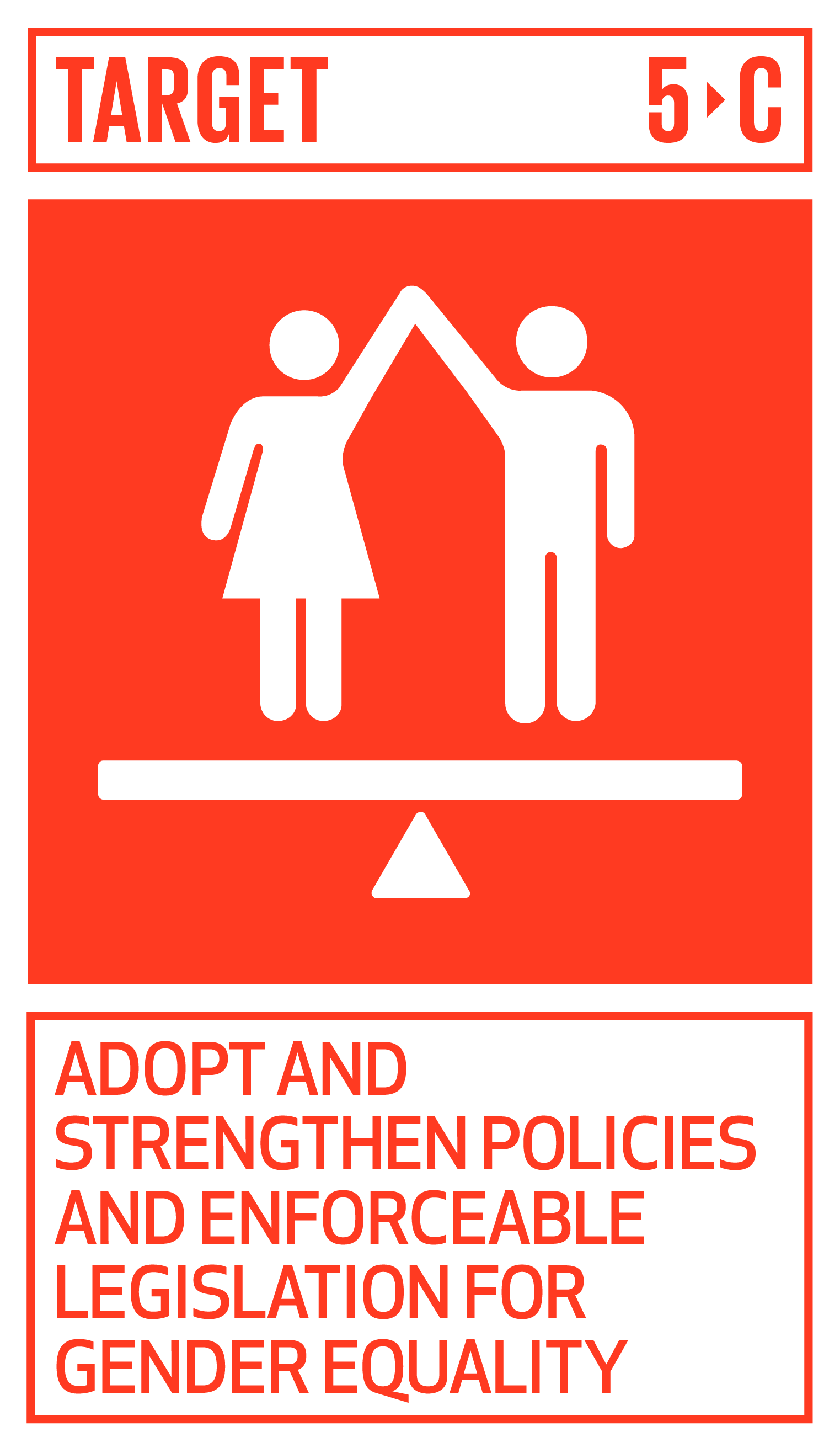 Adopt and strengthen policies and enforceable legislation for gender equality.
Adopt and strengthen policies and enforceable legislation for gender equality.
Every company can play a role in advocating for legislative action and legal change in the countries where they operate. Indeed, the influence and voice of the private sector can often shape political action.
What you can do “in the factory” to adopt and strengthen policies and enforceable legislation for gender equality:
- Work with your corporate advocacy team to identify legal changes that will strengthen women’s rights and protect women workers. Consider partnering with your suppliers and civil society organizations.
- Support your company’s advocacy for gender equality laws and initiatives including but not limited to:
- expanding the definition of discrimination against women
- equal pay for work of equal value
- work prohibitions
- family leave
- inheritance/property
- nationality
- marriage and divorce
- violence against women
- quotas
- pensions
- legal capacity
Case Study
 Gap Inc.
Gap Inc.
Collaboration is key to driving transformational, systemic change on issues bigger than any one of us can tackle individually. That’s why Gap Inc. partnered with BSR’s HERproject, ILO Better Work, and CARE to launch Empower@Work, a collaborative effort dedicated to empowering women and advancing gender equity in global supply chains through the sharing of knowledge, skills and networks. By harnessing the power of collective reach and pooling knowledge and resources, the company aims to support economic independence and a better future for the more than 80 million women working in the apparel industry worldwide.
The approach is built on two pillars:
- Act to encourage and share best practices in worker training; and
- Advocate by amplifying collective voice for policy-level change.
Empower@Work released an open-source worker training toolkit for women’s empowerment that includes Gap Inc.’s P.A.C.E. women’s curriculum, as well as expertise and training from the other partners. One of the core pillars of Empower@Work focuses on influencing and policy advocacy, engaging key stakeholders across the apparel industry including governments, worker organizations, brands, and others. While the development of the Empower@Work operating model is still in progress, Gap Inc. intends to leverage this platform to bring these stakeholders together to, for example, prioritize women in COVID-19 response and recovery efforts. A fundamental guidepost for this work is ILO Convention C-190.

